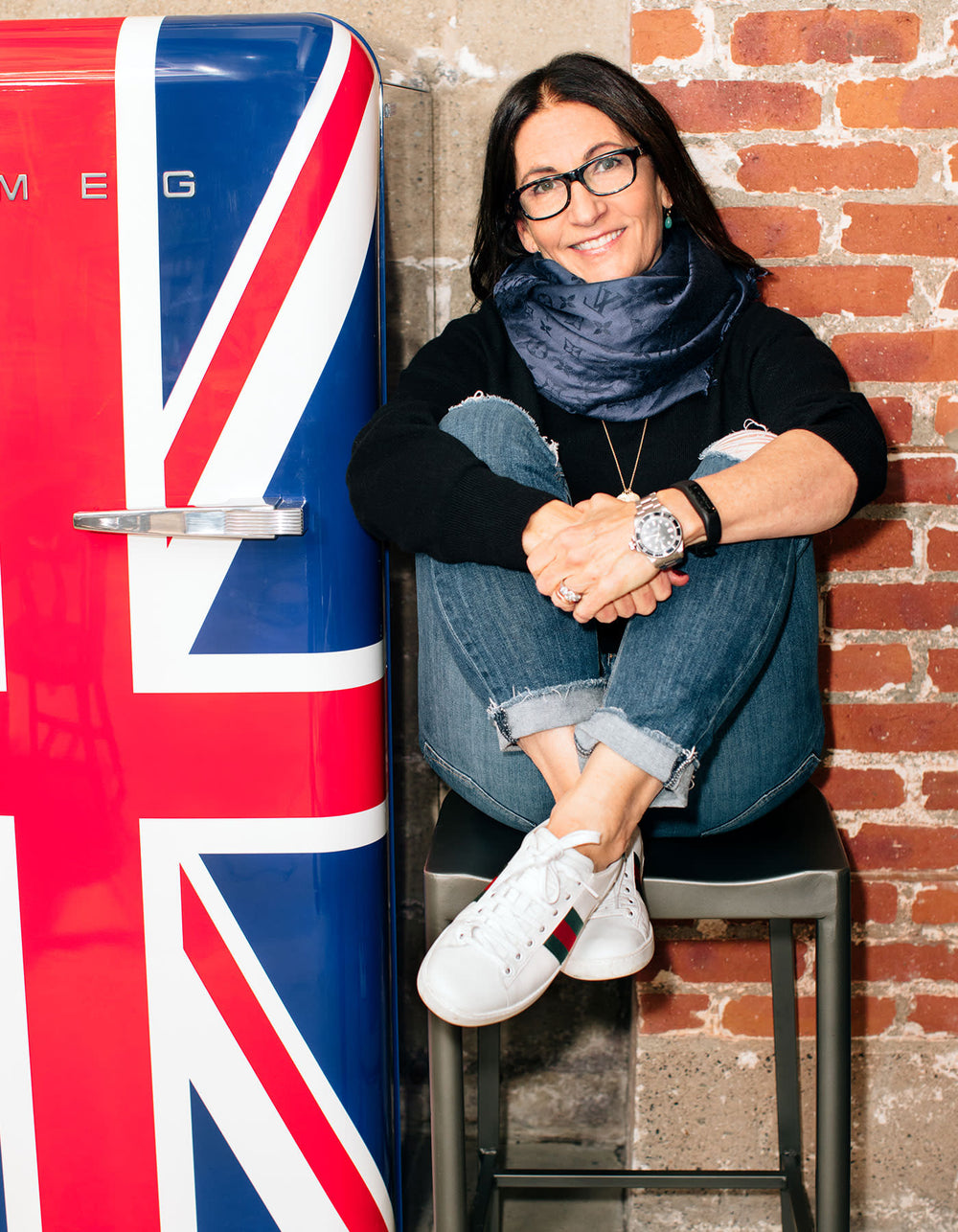Diary / Beauty / Aug 1, 2023
How to Find Your Skin's Undertones
Written by: Piper Gray
Photography by: Ben Ritter

If you wear foundation and concealer, it's so important to make sure you have the right shades to ensure you're not overpowering or distracting from your natural beauty. When you have the right colors at your side, you can easily create a flawless base.
You’ll want to match your skin’s tone as well as undertone when searching for the products that will cover or correct your complexion, namely foundation and concealer. While skin color refers to the amount of melanin in the skin, your skin undertone is the underlying color that is present beneath the skin's surface.
(When you hear skin color or skin shade, think skin tone.) Sun exposure or aging can affect skin color, but your skin undertone stays the same.
What Is Undertone?
Basically, undertones are the shade within your skin color. They can be warm, neutral, or cool. Two people with the same skin tone can have different undertones; they can both have a light skin shade, but one may have cool undertones while the other has warm undertones.
Same idea for skin tones: fair skin can have warm undertones, while dark skin can have cool undertones. Choosing the wrong undertone can make your makeup look off, but going with the correct undertone makes all the difference.
Cool undertones tend to burn and have a pink, red, or blue tint, while warm undertones have a yellow, peach, or golden tint (this is the type of skin that can tan). Neutral undertones are a mix of cool and warm hues and often change between the two.
Knowing what type of undertones you have will help you determine your color palette for both makeup products and clothes.
What Determines Skin Undertone?
The more melanin you have, the darker your skin shade will be. There are other types of melanin called pheomelanin and eumelanin, and their levels determine your undertone. While your skin shade can change with exposure to sunlight and age, your undertones will remain the same.
Pheomelanin produces reddish and yellowish tints that give undertones their warmth. On the other side, eumelanin is bluish and gives undertones a coolness. Neutral undertones have the same amount of pheomelanin and eumelanin.

How Do I Find My Skin’s Undertones?
When you match your undertones, your foundation is going to blend more seamlessly into the skin and look its most natural. The best way to find out if a color is right for your skin is to test it on the side of our face, not with a swatch on your arm or hand.
If the color disappears, perfect. But if you don’t have a product in front of you, there are other ways to find your undertone so you’ll have your selection process down to a science.
Look at Your Veins
One of the easiest ways to determine your skin’s undertone is to flip your wrist over and look at your veins.
If your veins appear blue or purple, you likely have cool undertones. If your veins appear green, you likely have warm undertones. You may not be able to immediately determine the color of your veins—it can be hard to tell if they are blue or green; in that case, you likely have neutral undertones.
Skin Reactivity to the Sun
Another way to determine your skin undertone is to consider how your skin handles the sun.
Do you burn easily? Would you call your complexion pink or rosy? Then you likely have cool undertones.
If you tend to tan (and not burn) and have a golden complexion, you likely have warm undertones. As for neutral undertones, if that describes you, then you probably don’t burn easily and your skin has a mix of pink and golden hues.
No matter your undertone, remember to wear sunscreen anytime you are out in the sun. (We doubt we need to convince you, but here’s the lowdown on all things sunscreen and sun damage.)
Look at Your Jewelry
Is there a certain metal that you gravitate toward when you wear jewelry? An easy jewelry test can provide clues about your skin undertone.
You likely have cool undertones if you feel you look best in silver jewelry. Same idea for gold jewelry, but in that instance, you probably have warm undertones. And if you like mixing and matching silver and gold because both metals look good on you, you likely have neutral undertones.
Consider Your Natural Hair Color
If you color your hair, dig out the baby pictures. Your natural hair color can give you clues about your skin undertone.
You likely have cooler undertones if you naturally have icy blonde, black, or ashy brown hair. Those who were born with red, auburn, golden blonde, or brown hair probably have warmer undertones. While these hair colors do not strictly define your undertones, they can help you pinpoint if you are cool or warm.
White Tee Test
Put on a plain, white t-shirt, one that you wear frequently, and stand in front of a mirror in a well-lit room. (You can also grab a piece of blank, white printer paper.)
Does your skin look more pinkish or yellowish? Your undertone is probably cool if your skin is more pinkish or rosy, and if your skin appears more yellowish or golden, your undertone may be warm. Consider yourself a neutral undertone if you cannot identify any yellow or pink in comparison to the white shirt or sheet of paper.

Makeup for Your Undertone
Once you have determined your undertone, you can easily choose the correct makeup and skincare to enhance your features. Having the wrong undertone could cause your complexion to look off—as in, it may look orange or even gray.
Foundation
If you are unsure of your best foundation shade, take our easy quiz to find the What The Foundation hue—we have 12 colors of WTF—that’ll suit you.
Concealer
Like foundation, concealer is another product you want to select for your skin shade and undertones. Available in over 25 shades, our Face Pencil easily covers dark spots and corrects discoloration.
If you need help picking your concealer shade, we have another quiz to steer you toward the right shade or shades; we recommend keeping a couple on hand. (And this article will also be useful.)
Blush
Once you’ve selected the right foundation and concealer to suit your undertone, choosing the right blush is just as important for adding color and dimension to your face.
Our Best Blush will add a soft, natural flush of color to your complexion. Look for shades with pink or red hues for cool skin tones, like Rosy or Berry. Colors like Sandy or Peachy—with peach or coral hues—are great for warm skin.
Lipstick
At Jones Road Beauty, we’ve always thought of lip color as a personal style preference, not as something that has to coordinate with your skin tone or undertone. If you want to find your “nude,” choose the shade that most closely matches your natural lip color, but for everything else, we always encourage experimentation, whether you’re opting for The Lip Tint, Cool Gloss, or Lip and Cheek Stick.
The Bottom Line
Finding your shade and undertones are important factors when choosing your makeup. You also have your skin type, texture, and preferences to consider. But now that you’ve read our helpful tips, our quizzes can help you get started in figuring out the best colors for coverage.













































 Miracle Balm
Miracle Balm
 Just Enough Tinted Moisturizer
Just Enough Tinted Moisturizer
 What The Foundation
What The Foundation












